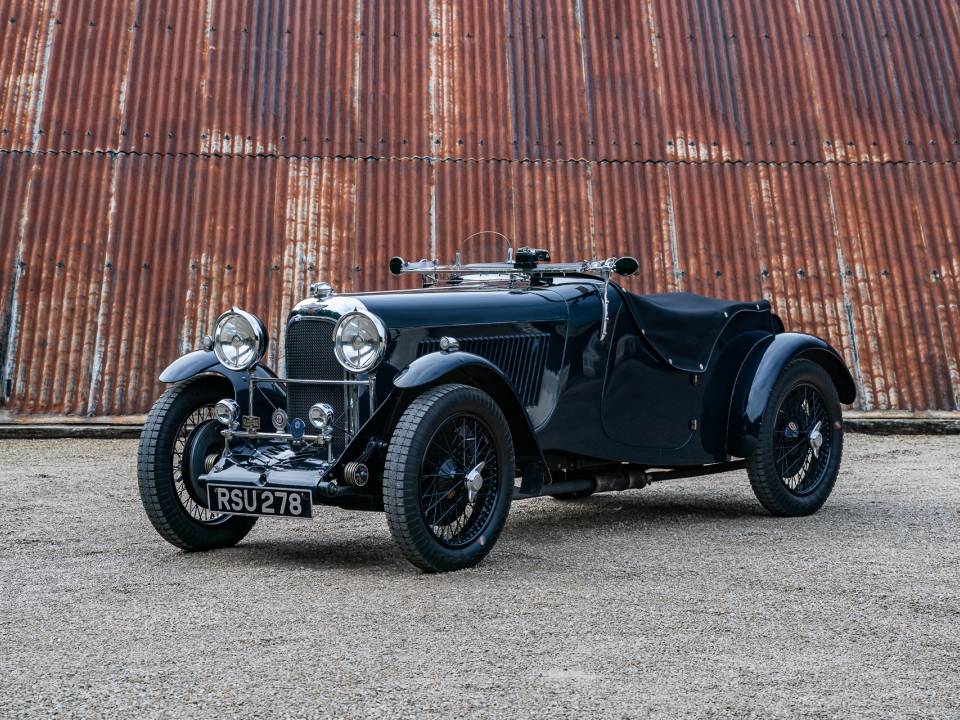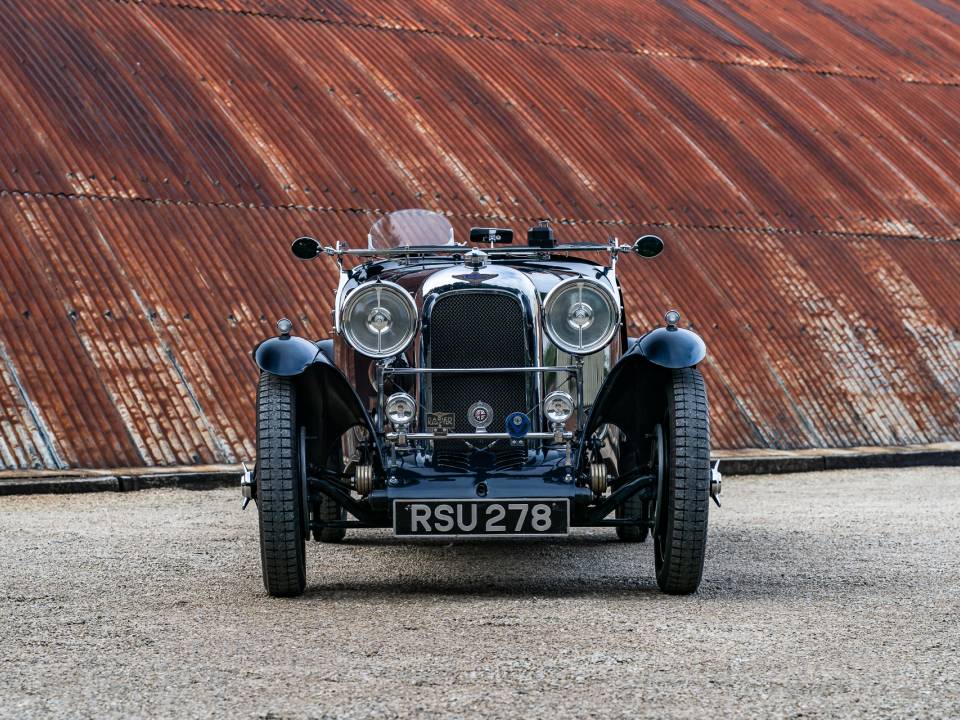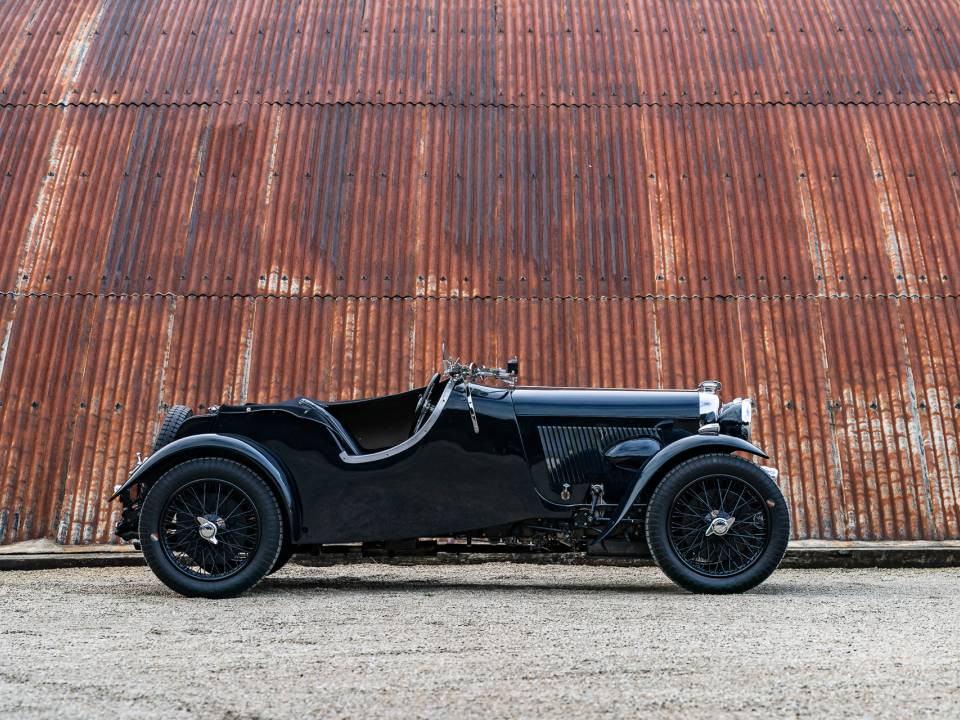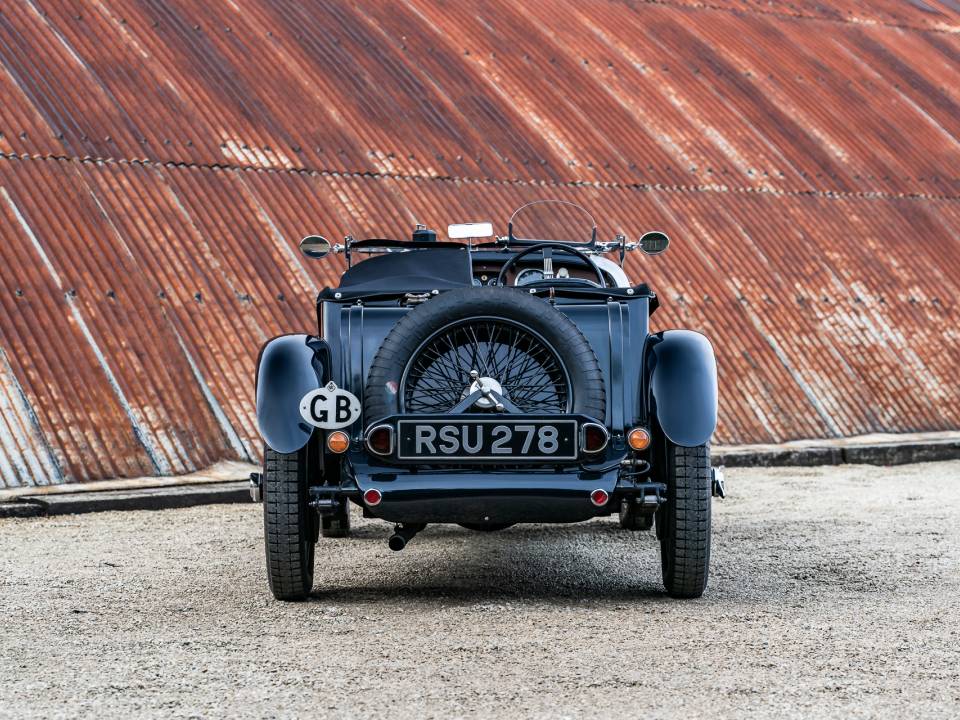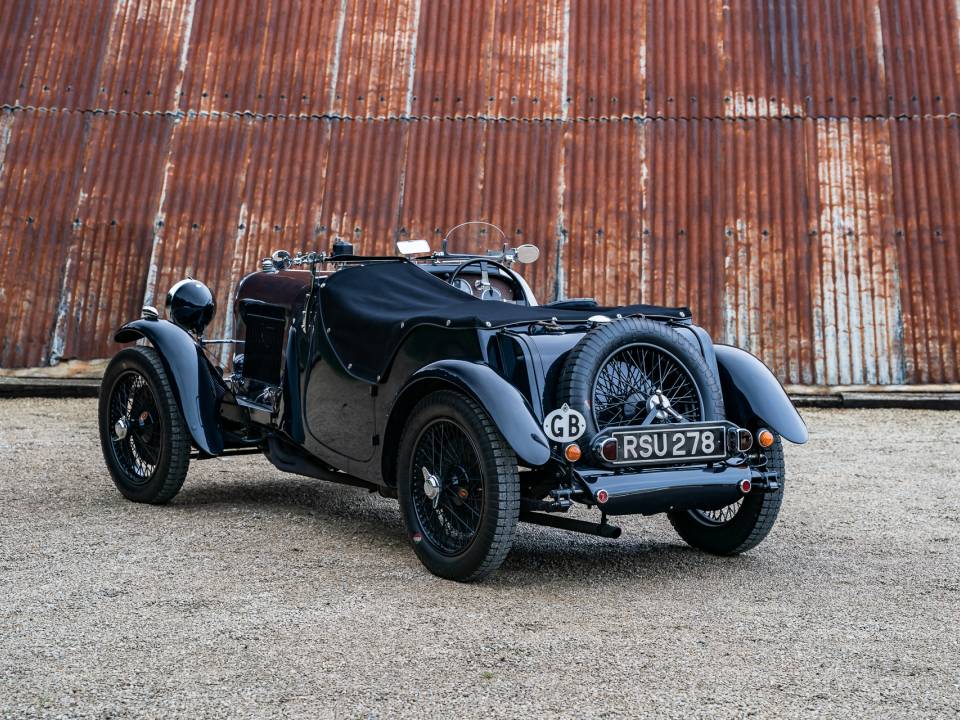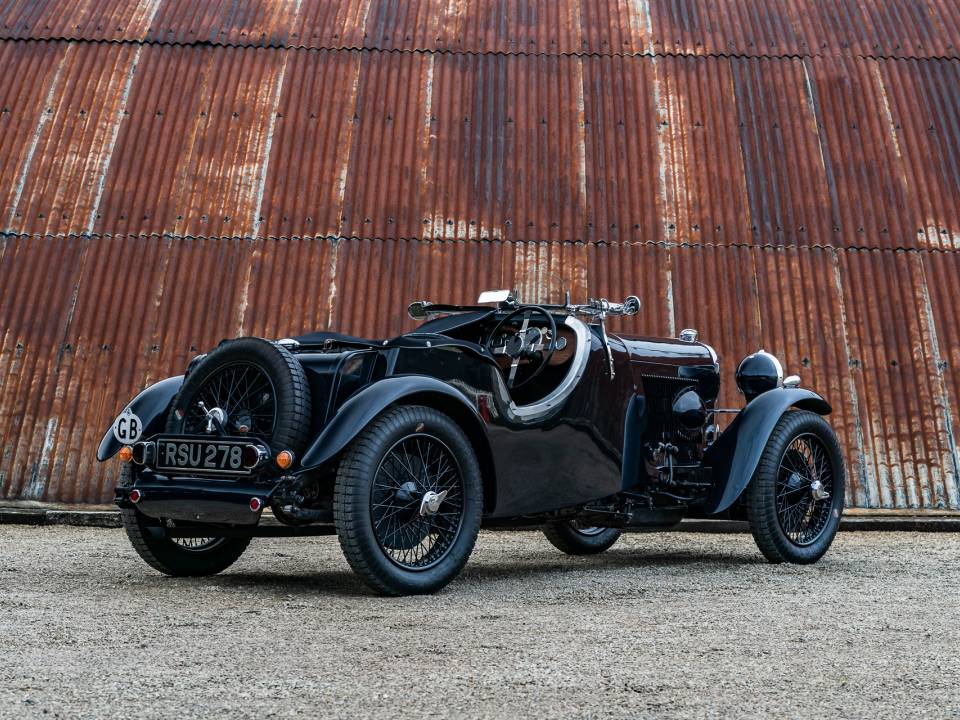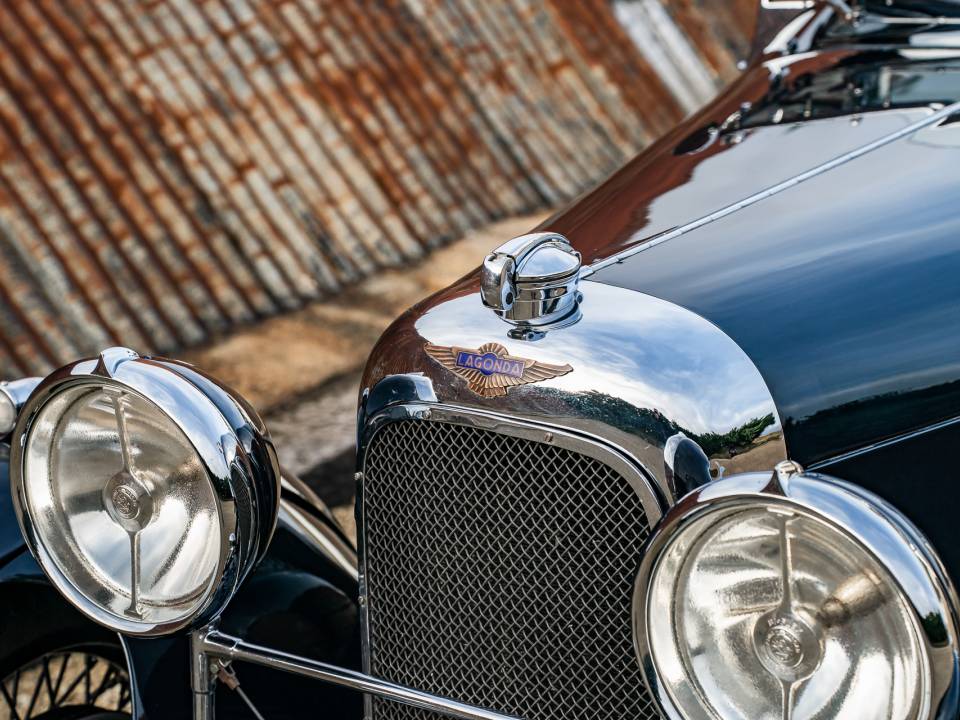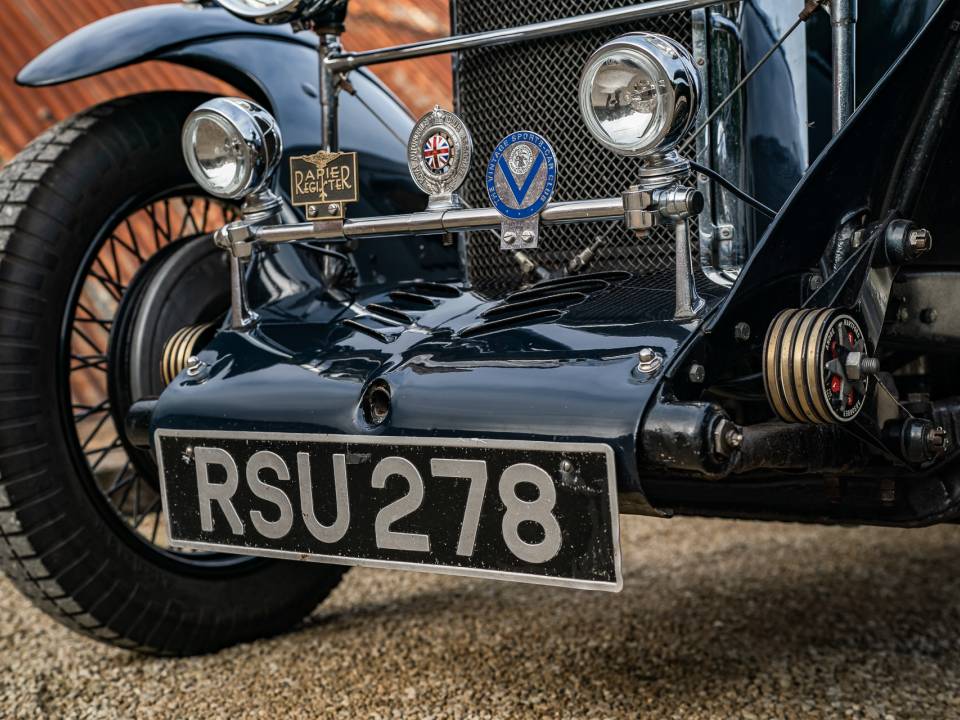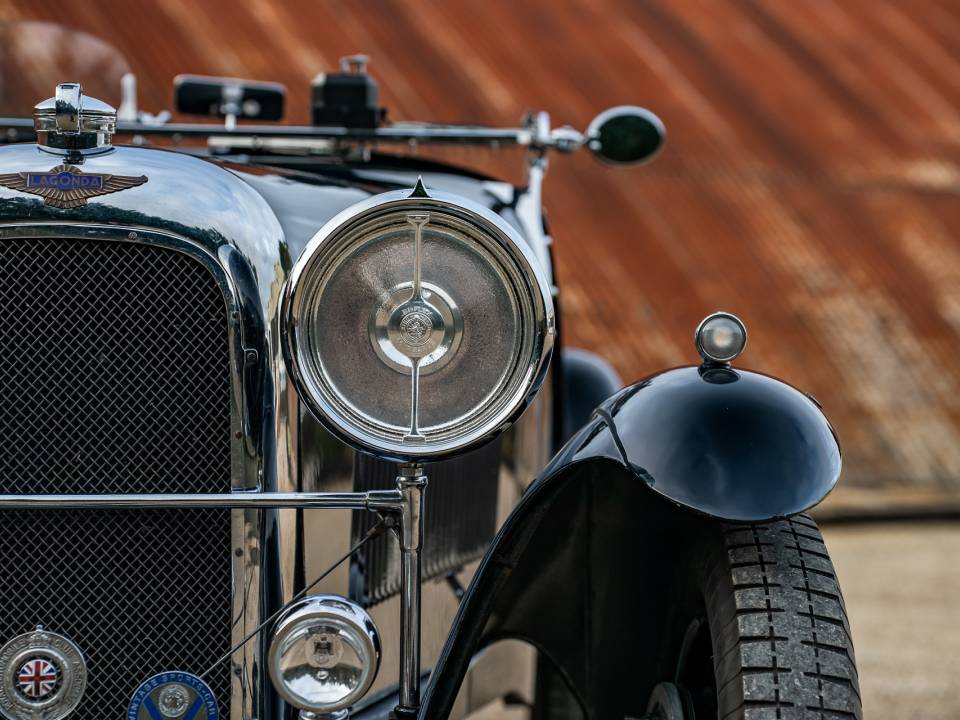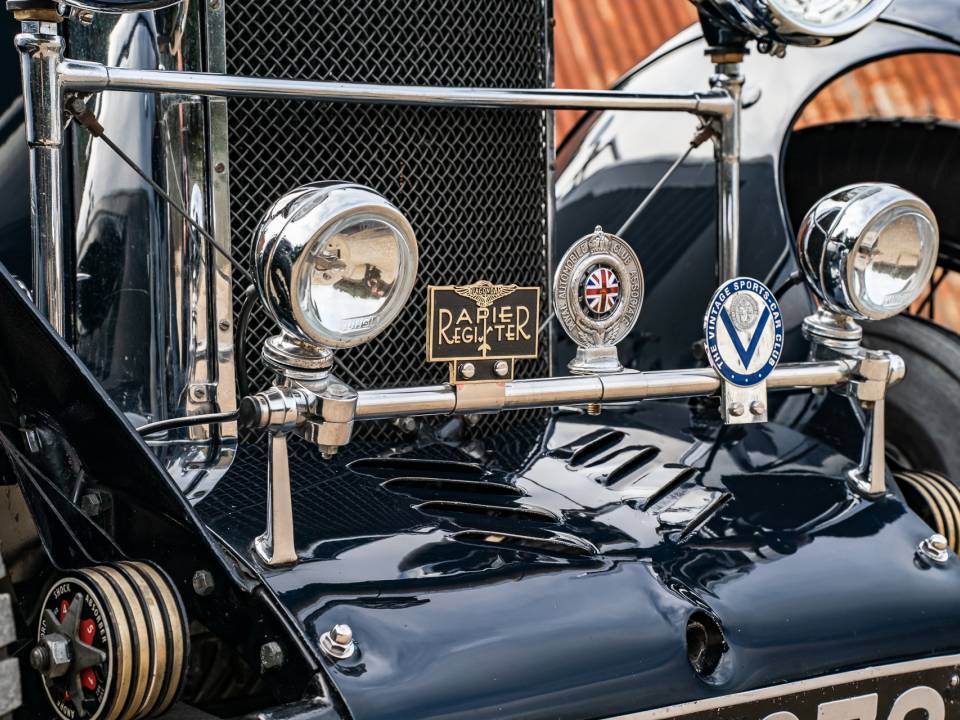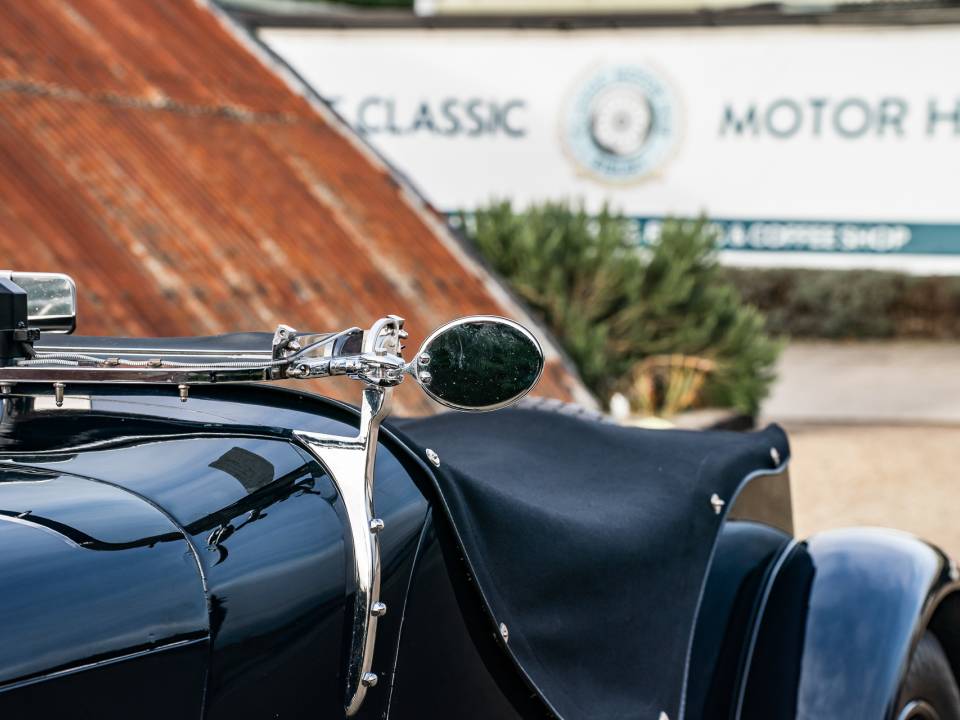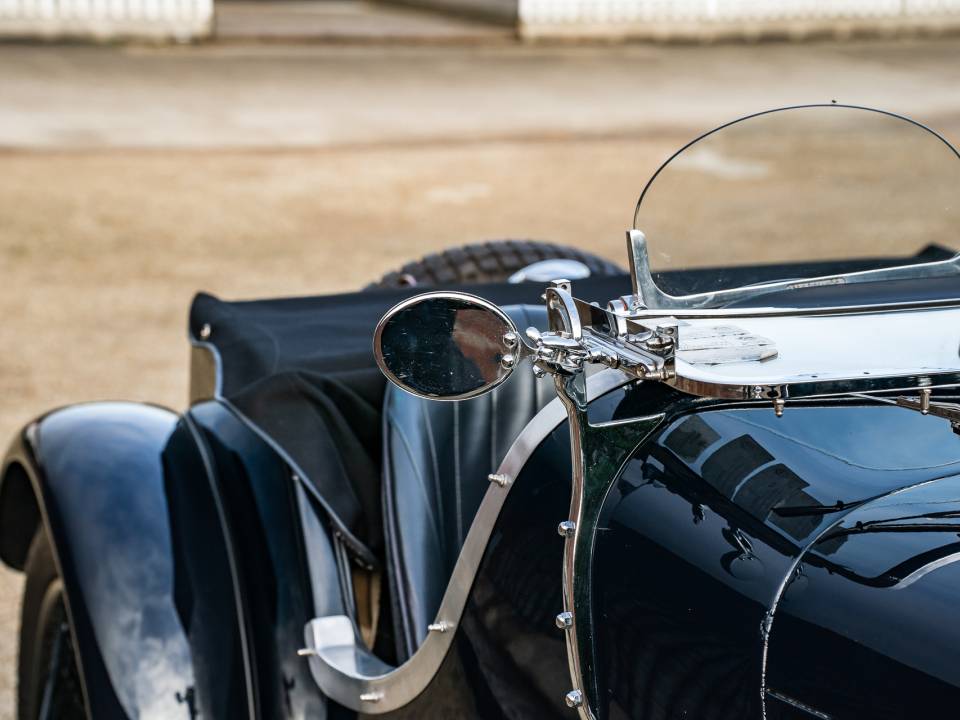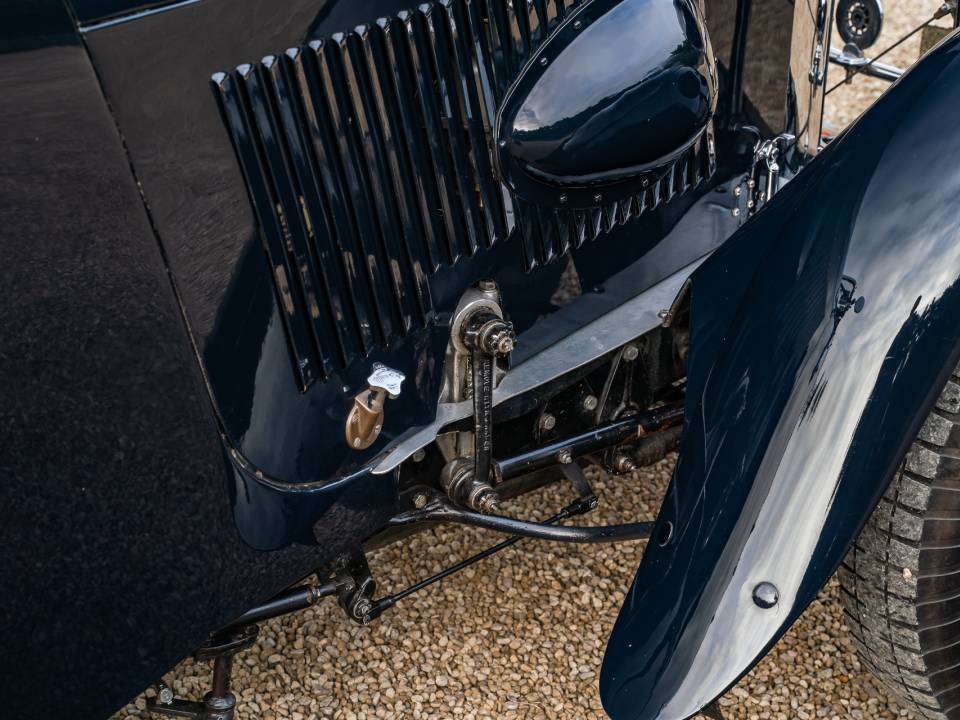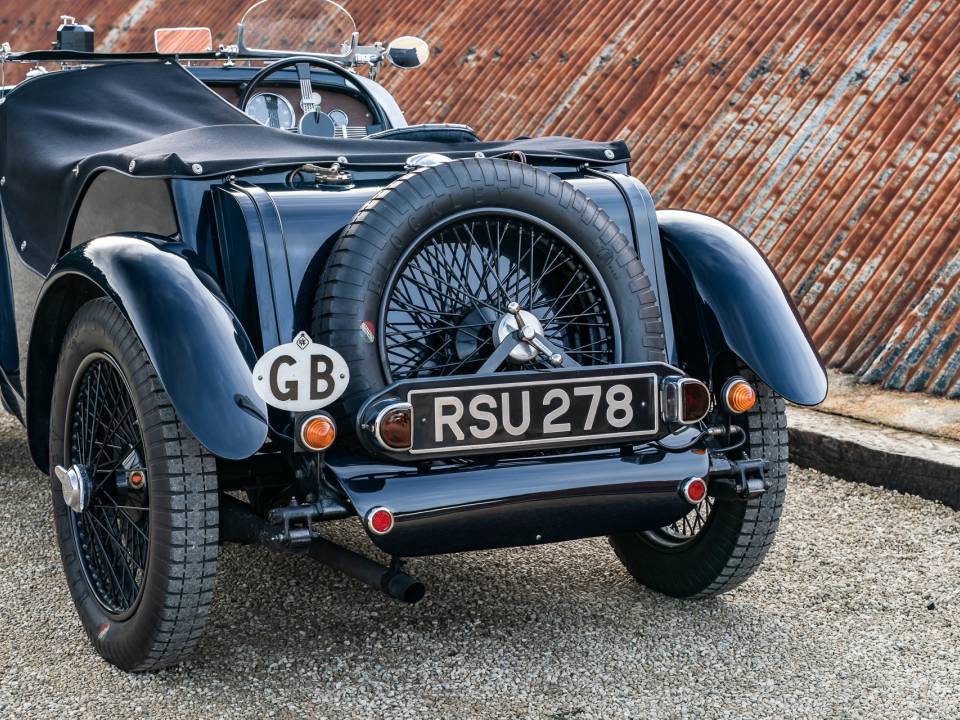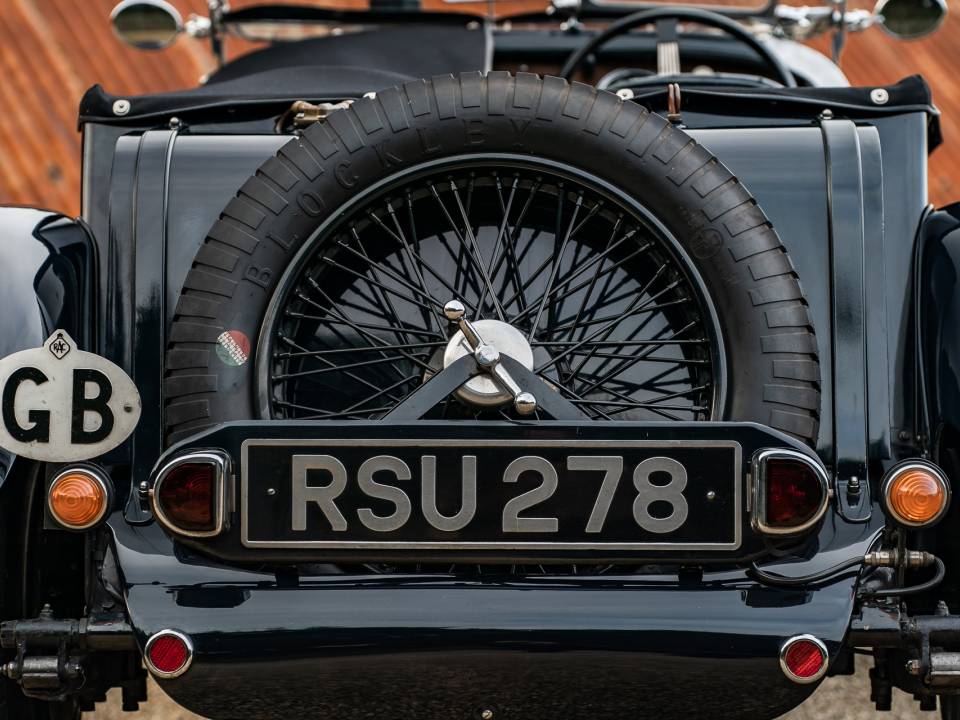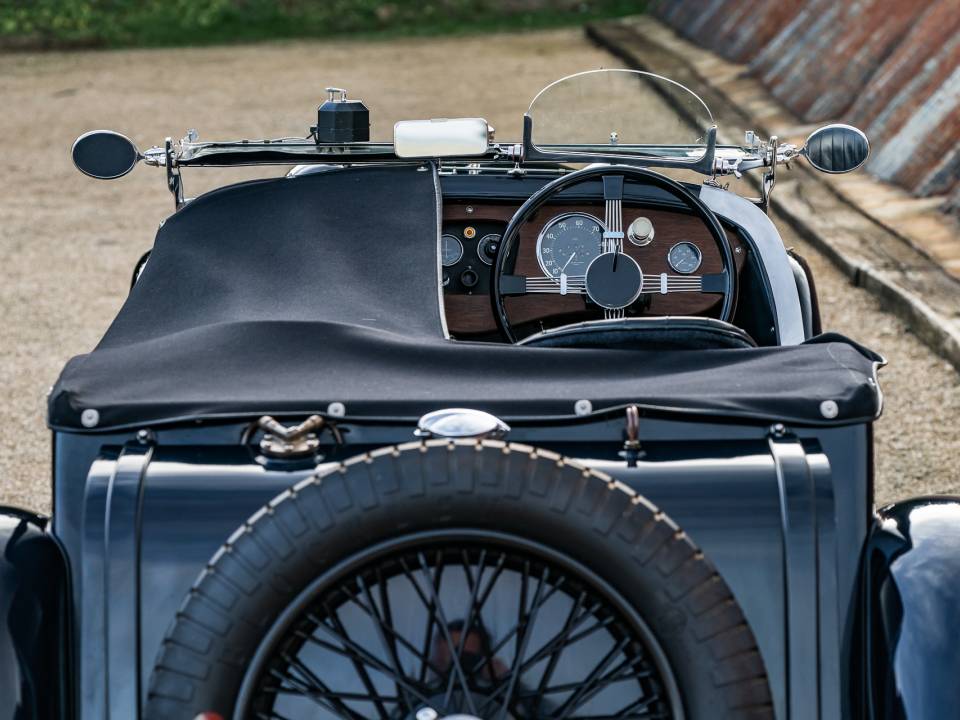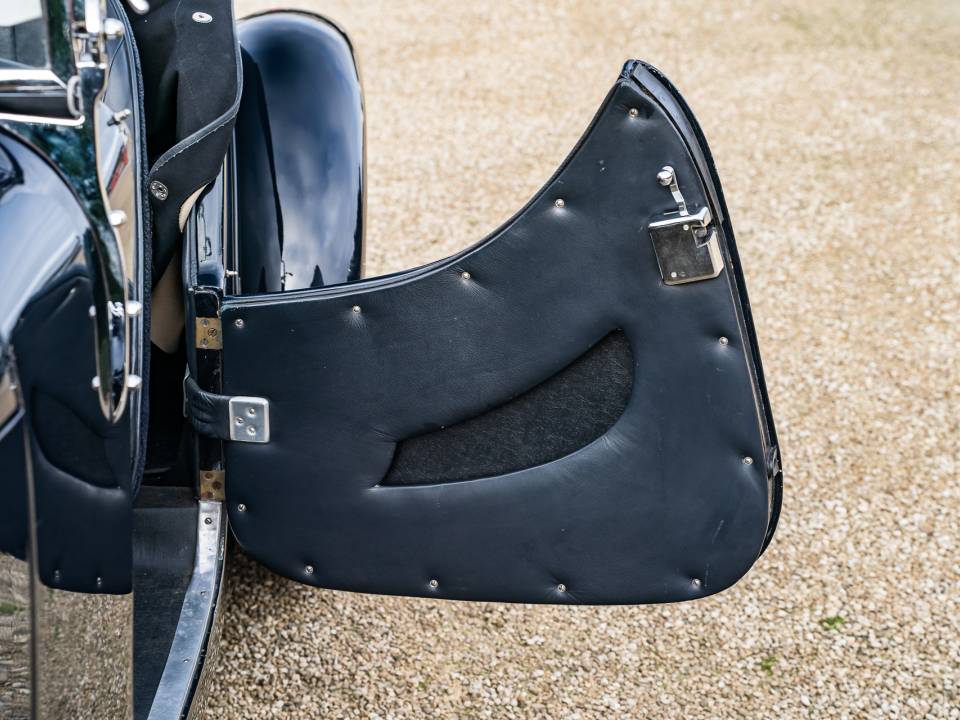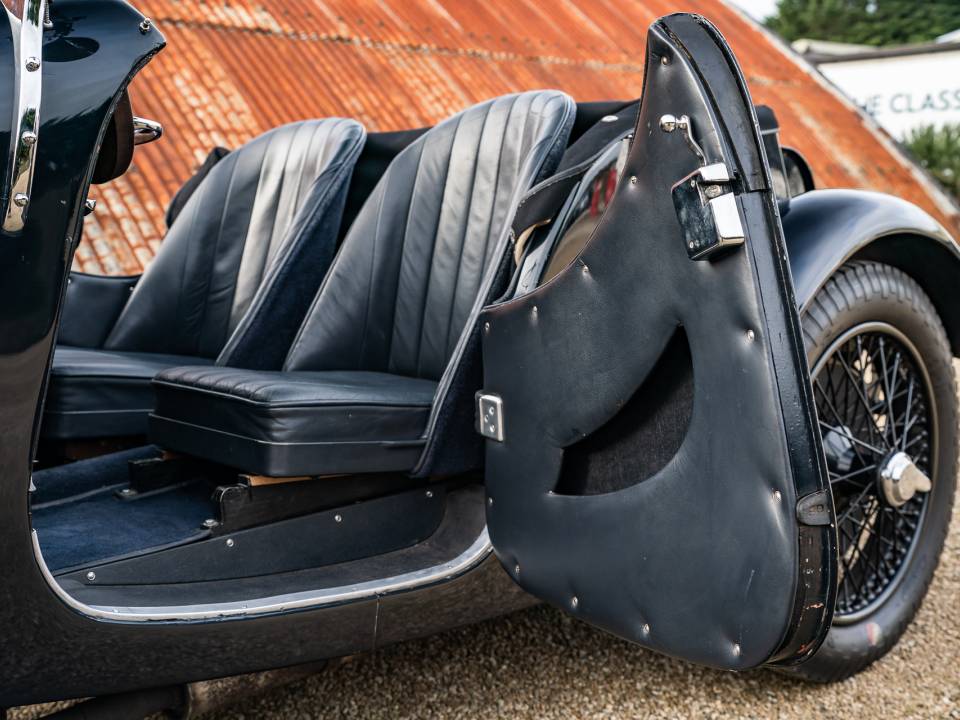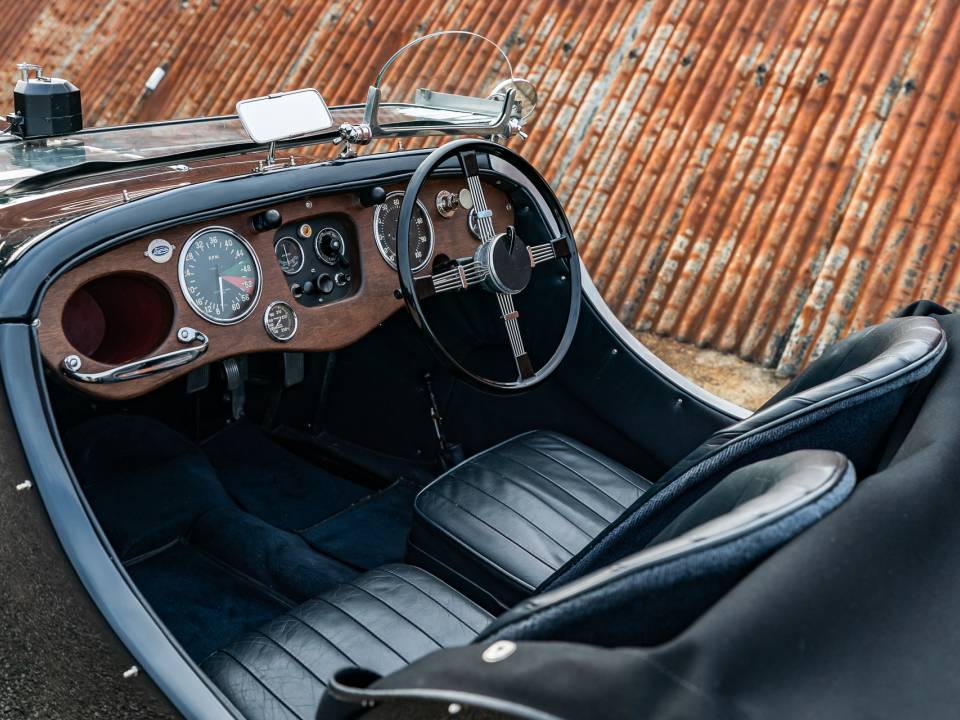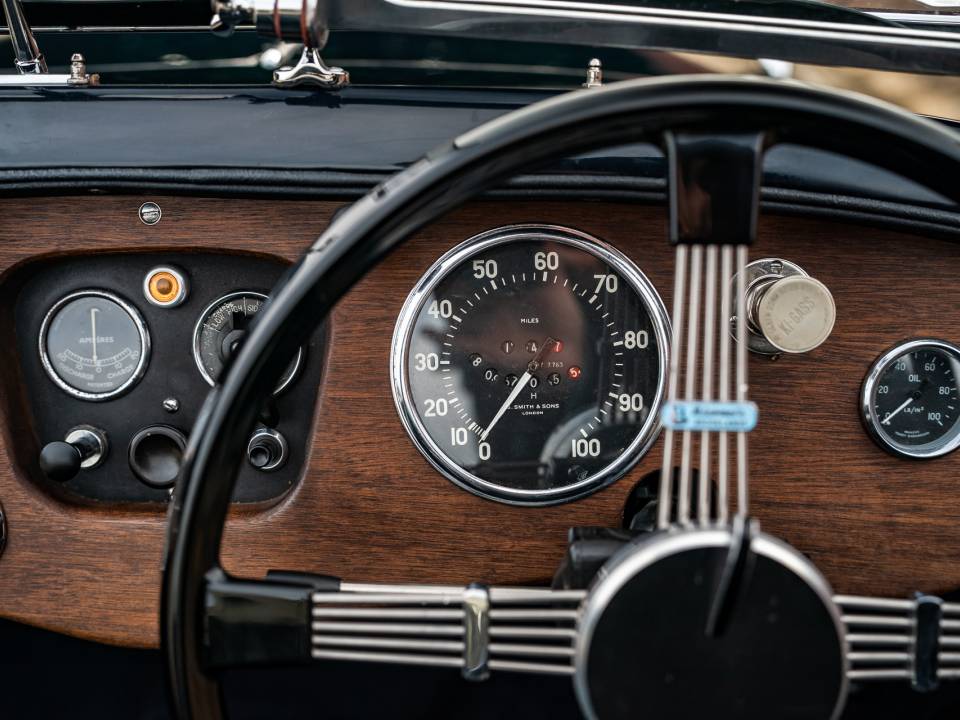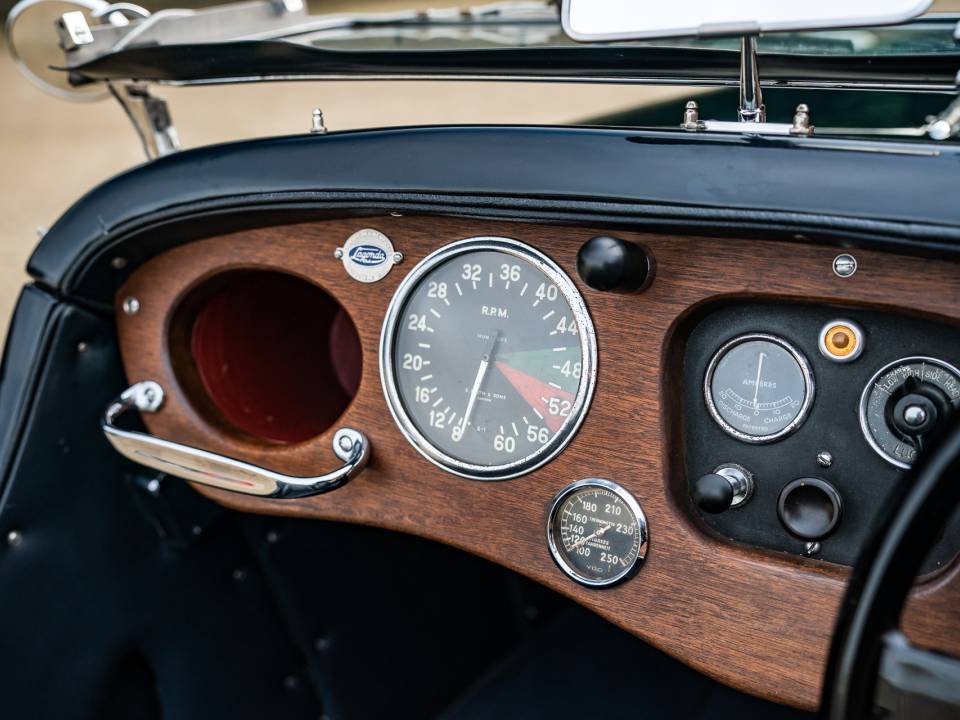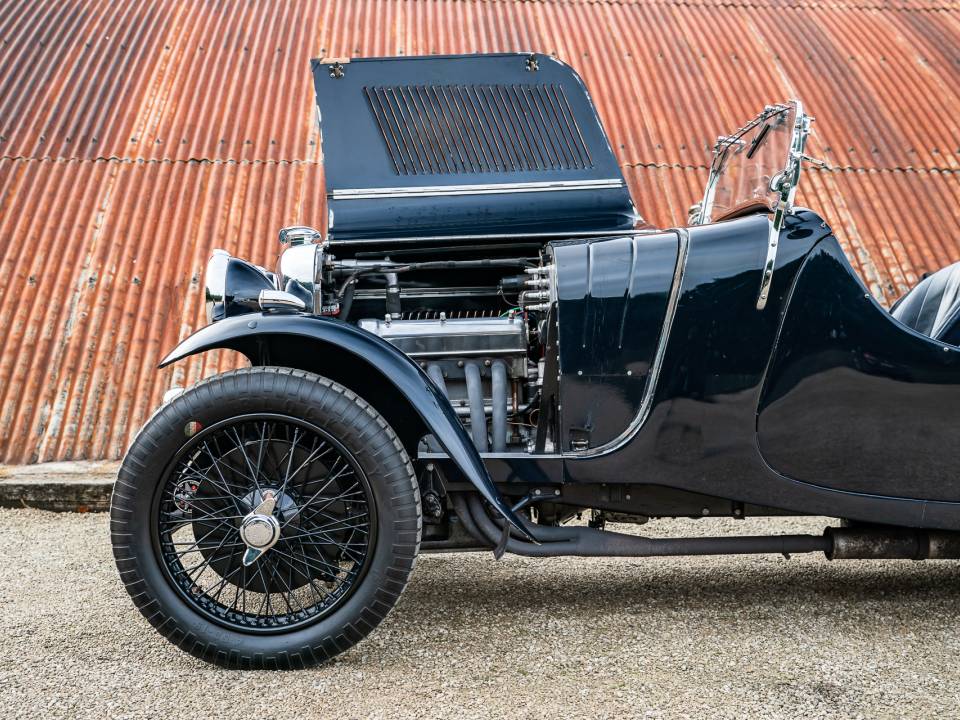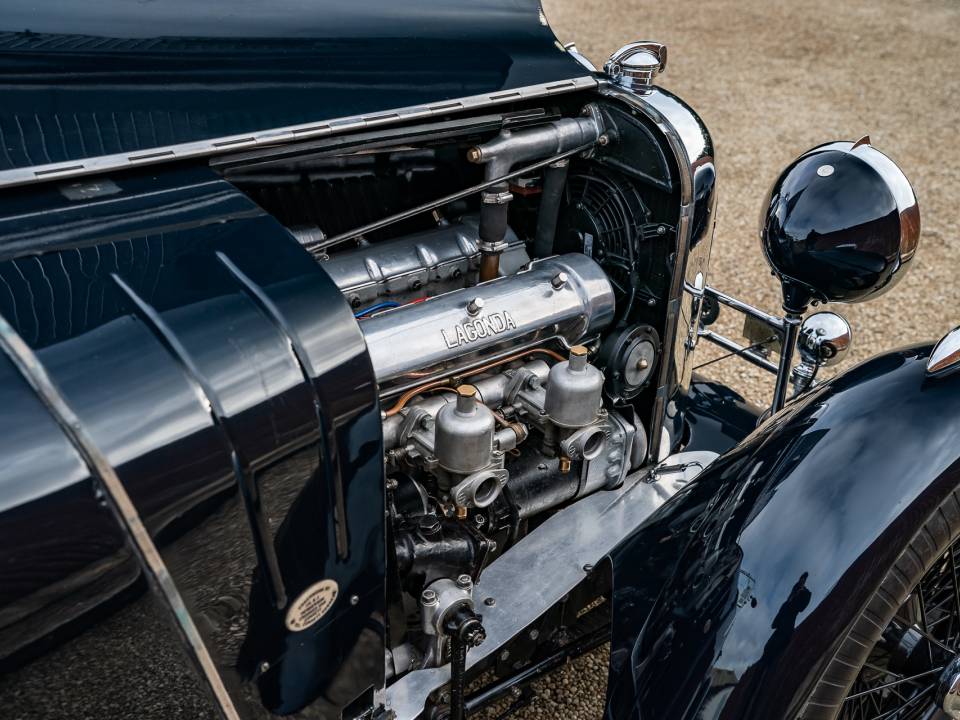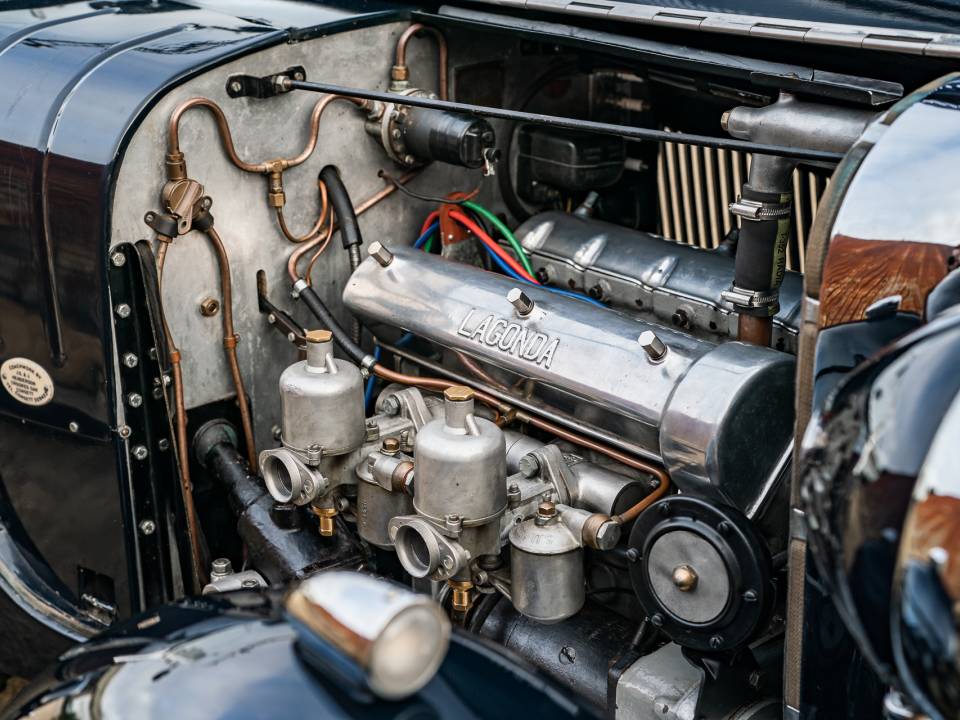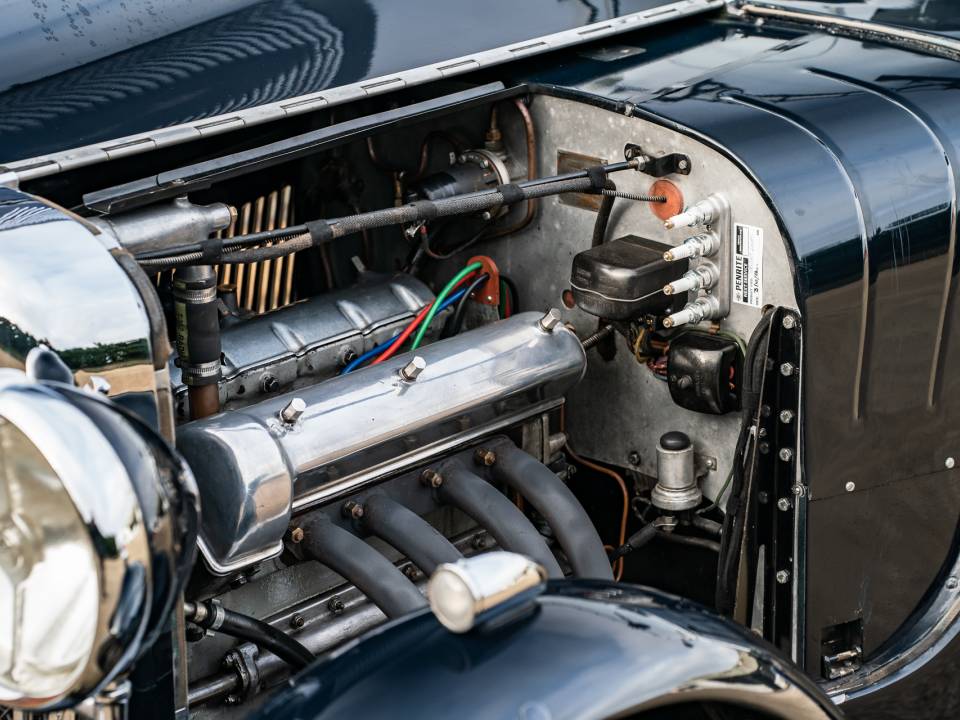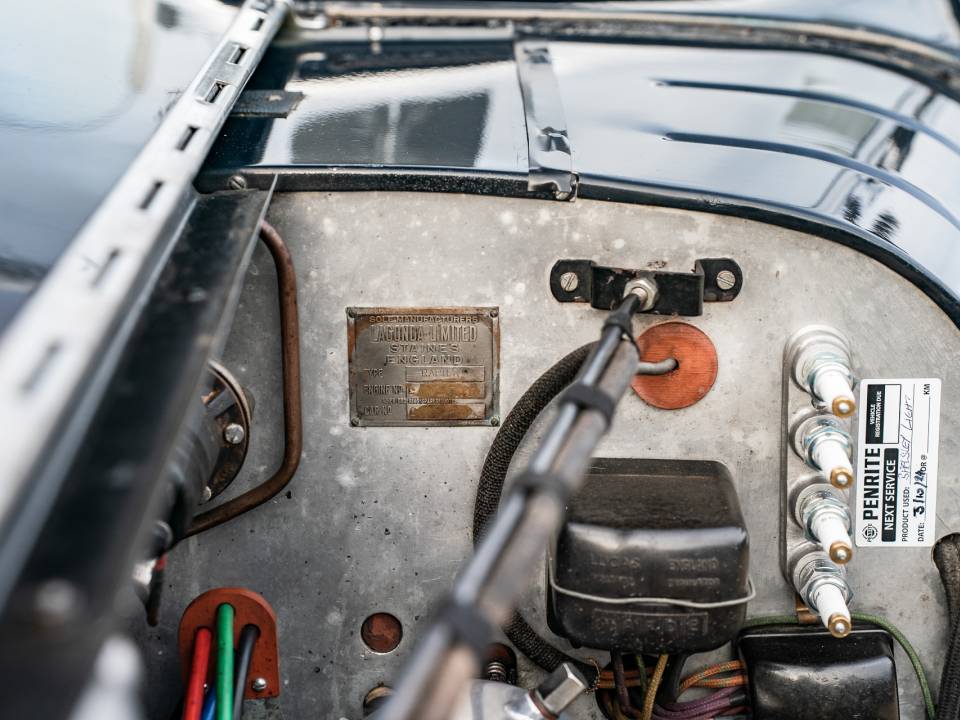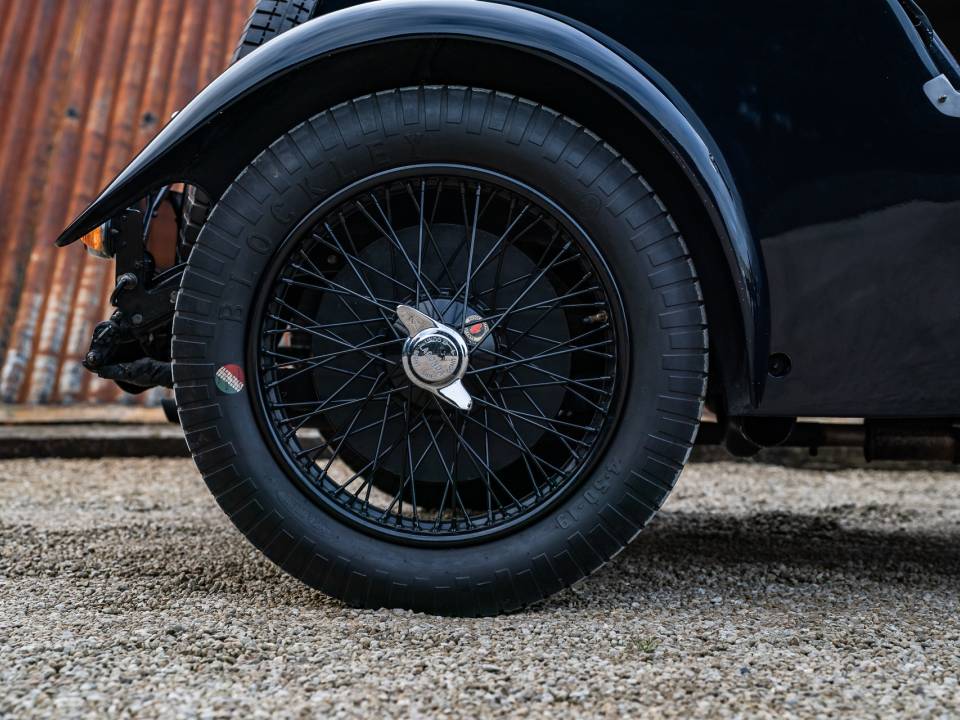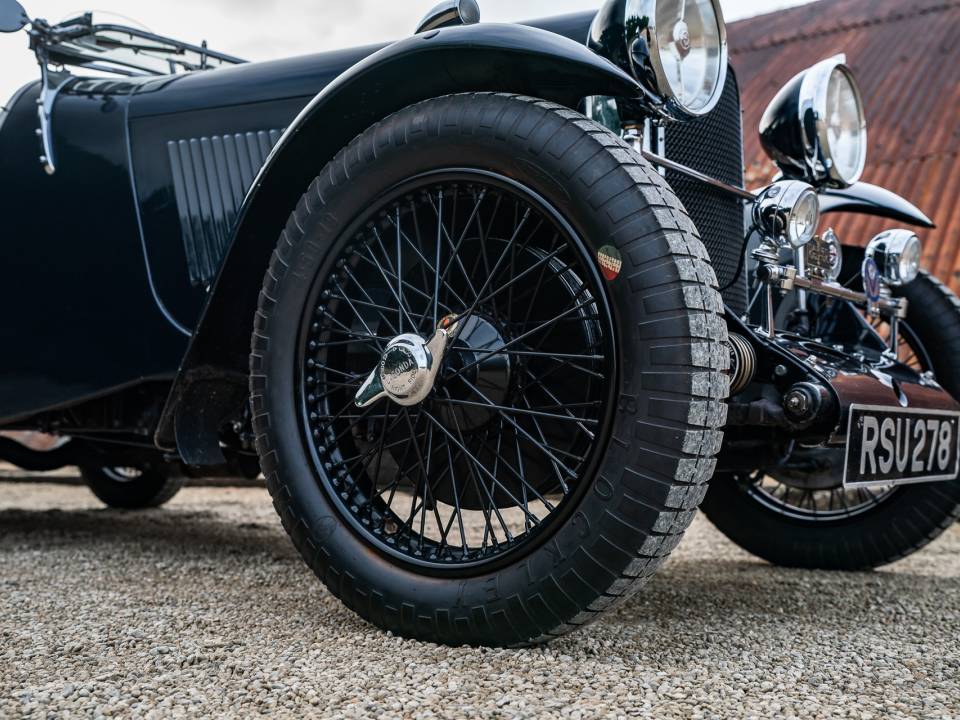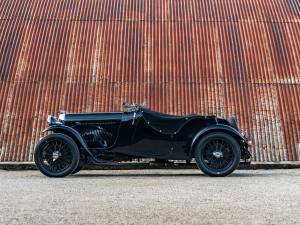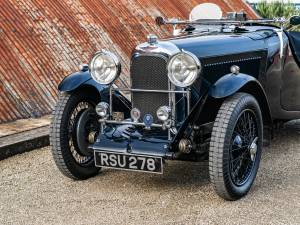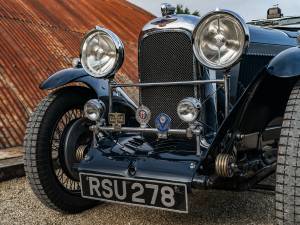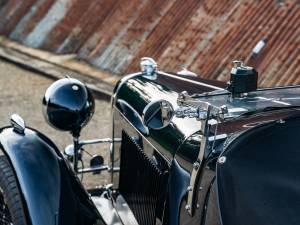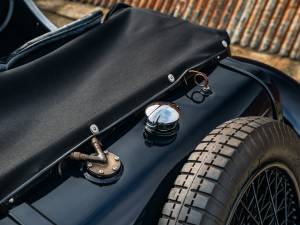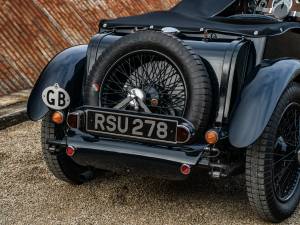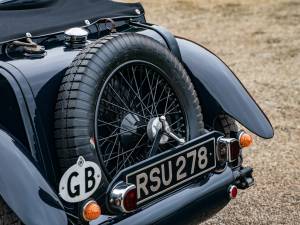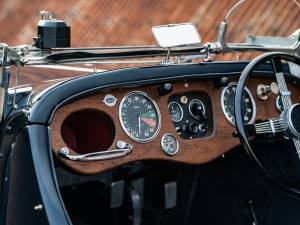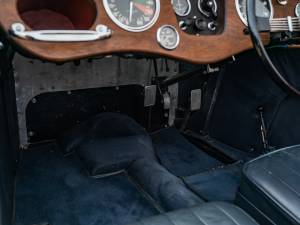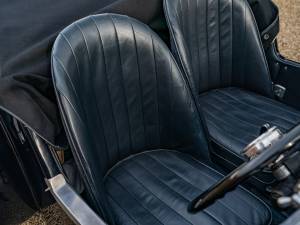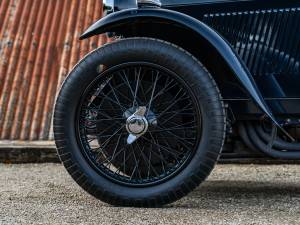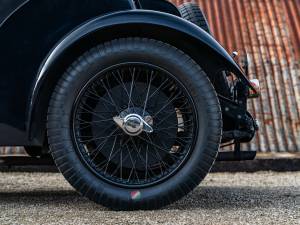1936 | Lagonda Rapier Ranalah
Eagle Replica
Eagle Replica
Eagle Replica
Alle Services zu diesem Fahrzeug
Beschreibung
- 1936 Lagonda Rapier for sale
- Newns-style two-seater coachwork
- Successfully campaigned with the Vintage Sports-Car Club
- A well-sorted example with 1470cc engine
This handsome Lagonda Rapier has competed in Vintage Sports-Car Club events in the UK as well as being raced on the continent, and has recently benefitted from the fastidious care and attention of its engineer owner.
RSU 278 was part of a large collection of Rapiers that was owned by Elliot Elder. Most of them had been dismantled, and such was the case with this particular example. It was rebuilt in 1989 by Brian Fidler, a well-known enthusiast of pre-war cars.
Most Rapiers were fitted with four-seater tourer bodies by Abbott of Farnham, but about a dozen were given two-seater bodies built by EJ Newns – a Thames Ditton-based coachbuilder that was later known as Eagle Coachworks. Geoff Henderson duly built a beautifully crafted and accurate aluminium copy of the Newns body for RSU 278.
The Rapier was later acquired by Lagonda enthusiast Roger Seabrook, who used it in VSCC competitions – the car twice won its class at the historic Prescott hillclimb. It also competed in France, at the Chanteloup hillclimb and the popular race meeting around the Angouleme street circuit. On each occasion, the Rapier was driven there and back rather than being trailered.
During this period, the rear axle was rebuilt with a new 4.55 crownwheel and pinion, and the leaf springs were stripped, lubricated and bound in Denso tape. Originally 1104cc, the engine was rebuilt around a 1470cc block with Jaguar con-rods, Fletcher-Jones high-compression pistons, buffer-ended inlet manifold, and a four-branch exhaust manifold.
The current owner acquired the Rapier in February 2020 and has worked on the car with great care and attention. His work has been painstakingly documented and includes tidying up the under-dash wiring, as well as stripping the clutch and replacing the release fork.
In order to improve the gear selection, he replaced the gearlever indent plate and took particular care to synchronise it with the indent plate on the gearbox, with the result that changes are now much more positive.
A Kigass pump was fitted in order to improve cold-starting, the Simms magneto was replaced with the correct BTH unit, and a Fletcher-Jones spin-on oil filter conversion was carried out.
Inside, legroom has been improved by fitting a Bluemels steering wheel in place of the original Frank Ashby wheel, which has been retained. The steering box was rebuilt in order to reduce play and the modern Wipac headlamps were replaced with period-correct Lucas L165s.
The ride quality has been improved thanks to the use of uprated Andre Hartford dampers and a thermostatically controlled electric fan has been fitted. The attention to detail extended to the fitment of a battery isolator switch behind the passenger seat and the installation of a lead that can be connected to a CTEK battery charger.
Now being offered for sale with the Classic Motor Hub, this Lagonda Rapier is in the ideal specification for both road and competition use, and comes with an in-depth history file that includes a record of all work carried out with the current owner. It’s a beautifully sorted example of this rare British sports car.
MODEL HISTORY
Lagonda was founded by Wilbur Gunn and made a name for itself before World War One by winning the 1910 Moscow-St Petersburg Reliability Trial. Based in Staines, just west of London, it also experimented with innovations such as monocoque construction and anti-roll bars.
The marque started to focus its attention on sporting models during the 1920s, and its greatest motor-racing achievement came in 1935, when the M45 Rapide of Johnny Hindmarsh and Luis Fontés won the Le Mans 24 Hours.
It was with one eye on competition use that the Rapier was developed during 1933 and the prototype was first shown at that year’s Motor Show. It was based around a twin-overhead-camshaft, 1104cc four-cylinder engine that was designed by Tim Ashcroft, ran on twin SU carburettors and was impressively high-revving for its day. The specification was completed by an ENV pre-selector gearbox and extremely effective 13in Girling brakes.
About 300 Rapiers had been built by the time Lagonda went into receivership at the end of 1935. The company would be rescued by Alan Goode, but the rights to Rapier production and all the remaining components had passed to a new firm called Rapier Cars Ltd, which had been set up by Ashcroft, former Lagonda director Bill Oates and Nevil Brockelbank.
These cars were badged Rapier and were assembled in Lagonda’s old service depot in Hammersmith. The engines were slightly smaller at 1087cc and a supercharged version was introduced in 1936, but production of the Rapier-built cars ended in 1938.
Fahrzeugdetails
Fahrzeugdaten
- Marke
- Lagonda
- Modellreihe
- Rapier
- Modell
- Rapier Ranalah
- Erstzulassung
- Nicht angegeben
- Baujahr
- 1936
- Tachostand (abgelesen)
- 0 mls
- Fahrgestellnummer
- Nicht angegeben
- Motornummer
- Nicht angegeben
- Getriebenummer
- Nicht angegeben
- Matching numbers
- Nein
- Anzahl Vorbesitzer
- Nicht angegeben
Technische Details
- Karosserieform
- Cabriolet (Tourer)
- Leistung (kW/PS)
- 63/85
- Hubraum (ccm)
- 1500
- Zylinder
- 4
- Anzahl Türen
- 1
- Lenkung
- Rechts
- Getriebe
- Manuell
- Gänge
- 4
- Antrieb
- Heck
- Bremse Front
- Trommel
- Bremse Heck
- Trommel
- Kraftstoff
- Benzin
Individuelle Konfiguration
- Außenfarbe
- Blau
- Innenfarbe
- Blau
- Innenmaterial
- Leder
Zustand & Zulassung
- Zustandskategorie
- Restauriert
- Gutachten vorhanden
- Nicht angegeben
- Zustand
- Zustandsbericht beauftragen
- H-Kennzeichen
- Zugelassen
- Fahrbereit
- FIVA
Services für Lagonda Rapier Ranalah
- In Kooperation mit:

Anfahrt

The Classic Motor Hub
Sales Team
Appointment Only
GL7 5NX Bibury
🇬🇧 Vereinigtes Königreich
